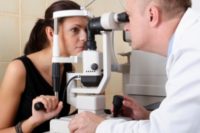OSHA ought to take its $500-$600 million budget, cut back on standards-setting, double down hard on “bad actors,” and lobby to raise fines to levels approaching EPA penalties for egregious neglect and fatalities like we saw in West, Texas, in April.
Play to your strengths
The agency is 40+ years old and needs to seriously modernize. Its focus should be on enforcement and education. Its outreach initiatives (falls, temp worker safety, distracted driving, Latino safety), growing list of practical “apps,” and e-tools are among the best work OSHA does. When you have nearly two million visitors a year to your website, as OSHA does, you’re doing something right. Something of value. Put your resources where you get a pay-off.
OSHA also needs to lend a helping hand to badly under-funded NIOSH. NIOSH performs important research, analysis, and has a good handle on where occupational safety and health is heading. OSHA should be NIOSH’s megaphone. The agency should adopt and promote especially health-related issues that NIOSH is out in front on, such as job stress and mental health.
This would be part of modernizing OSHA’s A-Z portfolio of educational topics. Safety pros today are involved in organizational cultures, human dynamics, leadership dynamics, employee engagement, the psychological aspects of safety. Responsibilities are growing in areas such as sustainability, corporate social responsibility, risk assessment and health promotion.
OSHA’s areas of expertise should reflect the realities of occupational safety and health in the second decade of the 21st century. Surely this will lead to more support and respect from individual professionals and corporations than over-promising and under-delivering on standards.
With that in mind, we propose the following additions to OSHA’s A-Z topic list.
• Aging workforce
Boomers with aches and pains will be working longer than they’d like
• Alcohol abuse (a NIOSH subject)
Recall the Vegas construction guys drinking in the morning?
• Apps
Make them easily accessible; the collection will only be expanding
• Arc flash
Yes, it’s covered in different standards, but break it out, make it easy to find
• Attitudes & values
OSHA should tap internal and external experts to help pros understand what makes people tick
• Behavior-based safety
Yes, labor will be outraged, but after 20+ years BBS is a staple of many programs, including VPP sites
• Benchmarking
• Bullying
European safety agencies are far ahead of the U.S. on this subject
• Business travel safety / international travel safety
How many millions of business people are on the road every week?
• Cardiac arrest
Yes, OSHA covers AEDs, but this is an aging workforce health issue worthy of its own category
• Cognitive biases, blind spots, failures
Help professionals understand why people make the mistakes they do
• Conflict resolution
A challenge for every professional
• Contractor safety management (cite best practices)
• Corporate social responsibility
• Cultures of safety (cite best practices)
How can OSHA not include “culture” in its A-Z list?
• Diversity management
• Driving safety
• Engagement — worker participation (cite best practices)
• Emotional intelligence — active listening, probing, interviewing, empathy, trust
Professionals could benefit from more education in these “soft skills”
• Fatality prevention (cite best practices)
OSHA does a lot of work with fatality investigations, but corporations are interested in prevention
• Fatigue
Some corporate owners don’t want to talk about the hours they’re demanding, but it is a risk factor
• Foreign-speaking workers
• Global harmonization
OSHA should be at the forefront of discussions to harmonize numerous international standards
• Goal-setting
What does the agency have to say about good and bad safety goals?
• Green building / green construction safety
• Group dynamics — meetings, committees
Education can improve these traditional sinkholes of many a safety program
• Health promotion in the workplace
• Homicide
OSHA covers workplace violence, but let’s get down to it: homicides are a leading cause of fatalities
• Home safety — safety 24/7
OSHA and NISOH combined can do much to break down the walls between on and off the job safety
• Human factors
• Immigrant, refugee and migrant worker safety (covered by NIOSH)
• Lone worker safety
• Management leadership
What should be expected of senior leaders when it comes to safety?
• Management systems – OHSAS18001, ANSI Z10, VPP
Professionals need to understand the systems on the market
• Mental health (a NIOSH subject)
OSHA could do much to remove the stigma that causes much “presenteeism”
• Metrics
OSHA should help redefine what safety performance means
• Mindfulness
Sounds Zen-like, but there’s much to be said for focus, situational awareness, alertness in the moment
• Mobile safety technology
• Obesity — a workplace healthcare cost
• Observation and feedback
OSHA can throw its weight behind putting a stop to “blame the worker”
• Orientation training (cite best practices)
• Pain management
See aging workforce; plus, this can quickly escalate to a substance abuse problem
• Patient safety
OSHA covers hospital safety; it should lend its knowledge of human errors, which become medical errors
• Perception surveys
A valuable tool touted by one of the gurus of safety, Dr. Dan Petersen
• Prescription drug abuse (covered by NIOSH)
We live in a world of drive-through pharmacies; ‘nuf said.
• Product safety
• Psychology of safety
As engineering risks are reduced, why people take risks requires more understanding
• Refresher training
• Renewable energy safety — wind tower, solar thermal, photovoltaic
• Return to work (cite best practices)
Best practices are needed to counter some sleazy, corrupt practices
• Risks (new and emerging)
The current OSHA A-Z list does not mention “risk.” Some say risk is the future of safety and health.
• Risk management (a NIOSH subject)
• Risk assessment
• Social change and workplace safety
• Stress (a NIOSH subject)
OSHA’s current A-Z list does not mention stress. Why? Fear of corporate culpability. Time to get real.
• Sustainability and safety’s impact
Safety does have a role to play in sustainability. This is not the sole province of EPA.
• Supply chain management
Gaps in oversight, shallow inspections, suspect certifications are creating spectacular safety failures
• Temporary worker safety management
• Terrorism
Chemical processing plants, refineries, municipal water works, transit systems, there are plenty of targets
• Water — safe and smart usage
Safety and health professionals — and everyone — should understand the consequences of waste
• Wellness
• Wicked weather — preparation and response
Booming ratings for the Weather Channel
• Zero incident goals
OSHA should tap internal and external experts to air out if “zero” is a credible goal






